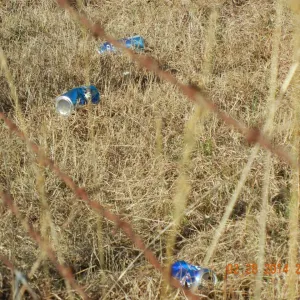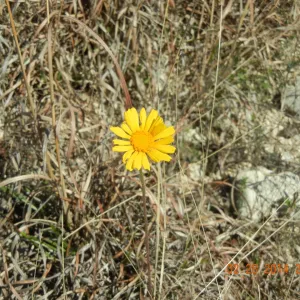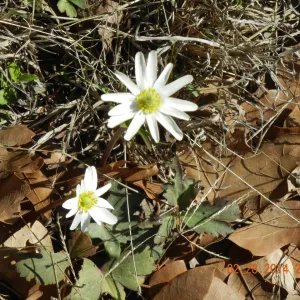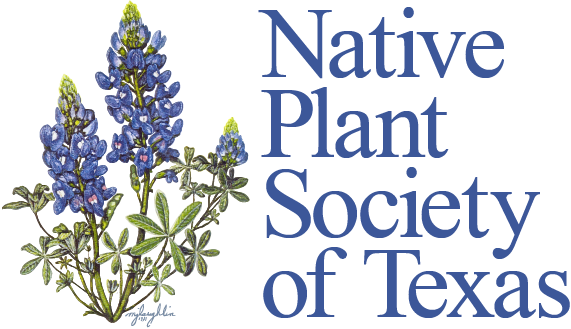by Delmar Cain – Boerne Chapter, Native Plant Society of Texas
Published in the Boerne Star on March 28, 2014
I am sure that I am in a very small minority of people that appreciate and enjoy watching vultures, black and turkey. In the winter when their numbers swell with visitors from the north, I have counted as many as 175 on the limbs and rooftops in their roosting area waiting for the air to warm to facilitate good soring and sailing. When the thermals arrive red-shouldered hawks, ravens and an occasional zone-tailed hawk are welcomed in the group.

But as my wife says the vultures have a job to do. And they do it magnificently, even if it is not done with the manners of a high tea. When a neighbor shot a feral hog and I ran out of time in finding someone to process it, I left the carcass near one of the vultures’ favorite resting spots. The carcass was totally gone in three days, except for the smell, which my dogs still visit. In nature there is very little that goes to waste.
Unfortunately, we humans have manufactured and dispersed items that aren’t found in nature and that even the vultures won’t touch. I am reminded of this when I help remove litter along Kreutzberg Road a couple of times each year. Beer bottles and beer cans, plastic water bottles, and soda cans, even when cut into smaller pieces by the county mowers, aren’t being eaten by any creature that I have encountered. Deer corn sacks, plastic takeout boxes and plastic cups, up to the 24-ounce size, may break into smaller pieces in time. But I haven’t seen anything that is trying to turn either the large or the small pieces into a meal.
April 5th is the date for the Texas Trash Off, sponsored by Keep Texas Beautiful. The local affiliate is the City of Boerne, which is sponsoring an event on April 12th. Those are the days that a few good citizens will go out and try to make a dent in the trash on the roads and in public places that a few clueless or careless citizens have been tossing or allowing to blow out of their vehicles for 365 days in the year. If it sounds like I may have turned a bit vinegary, you are right. There is more than one cause for the change.
In Greek mythology, Sisyphus was condemned to push a large rock up a hill each day, only to watch it fall for the next day. It is very frustrating to see a sparkling right of way ruined the next day with a shiny Bud Light beer can, flung in the intervening 24 hours. (The brewers of light beer need a more aggressive recycle program, since their patrons toss at least 80% of the beer cans. In eight years I have never found a Fat Tire bottle. Also beer cans are a hefty percentage of the trash.) After that first day, each day I travel the road I see new cans or fast food sacks with the remains of the sandwich box and a drink container. The county mowers shred the cans into pieces and make the job harder.
The easiest solution would be for users of the highway to take their trash to a proper disposal site. However, that requires a change of behavior, which doesn’t seem likely without a threat of punishment. I vote for drones patrolling trash hot spots. A few convictions for littering might create an incentive to keep that trash in the vehicle until it can be put in a trash bin.
Cities, counties and the state spend millions of dollars each year mowing public places and right of ways. Although some mowing may be necessary to protect the stability of the structures or to keep lines of sight clear for safety reasons, a major reason is because the public demands for aesthetic purposes that the areas look neatly mowed. The public lets the entities know through their phone calls and the entities respond with annual contracts for mowing or with mowing by public employees. It is not always necessary but we want it mowed anyway.
Trash is different. Unlike brush and weeds it does not become mulch. I live outside the city and pay to have my trash picked up and so do city residents. On designated days the city even picks up items that can’t be hauled away by the residents. But outside the city, once trash is separated from the provider or the buyer of a product it belongs to no one. If it is tossed from a car or blows out of a truck, it is claimed only by the wind. Even if it is tossed over the fence, it is still a community eyesore.

I wonder why the public that is so concerned about a mowed right of way is willing to drive by ugly, blowing trash day after day. The state contracts to have trash picked up on certain high volume roads. But for all the other roads we depend on small groups of caring volunteers to clean our trash and give us a few days of pleasant driving. If we are not going to make it tougher on the litterer, at least let’s spread the cost so that everyone pays his/her fair share to enable the litterer. Those that sell food and drink items that are carried out may need to bend their backs a bit more to the oars.

Bill Ward always advised me to be more positive, so here goes. Find a way to help your community on April 5th or April 12th. If you pick up trash along your street or road, you might be lucky enough to see a blooming Slender-stem Bitterweed or a blue or a white Wind-flower, like I did. It will give you a lift. Even if you manage to soar, the vultures won’t mind at all.
